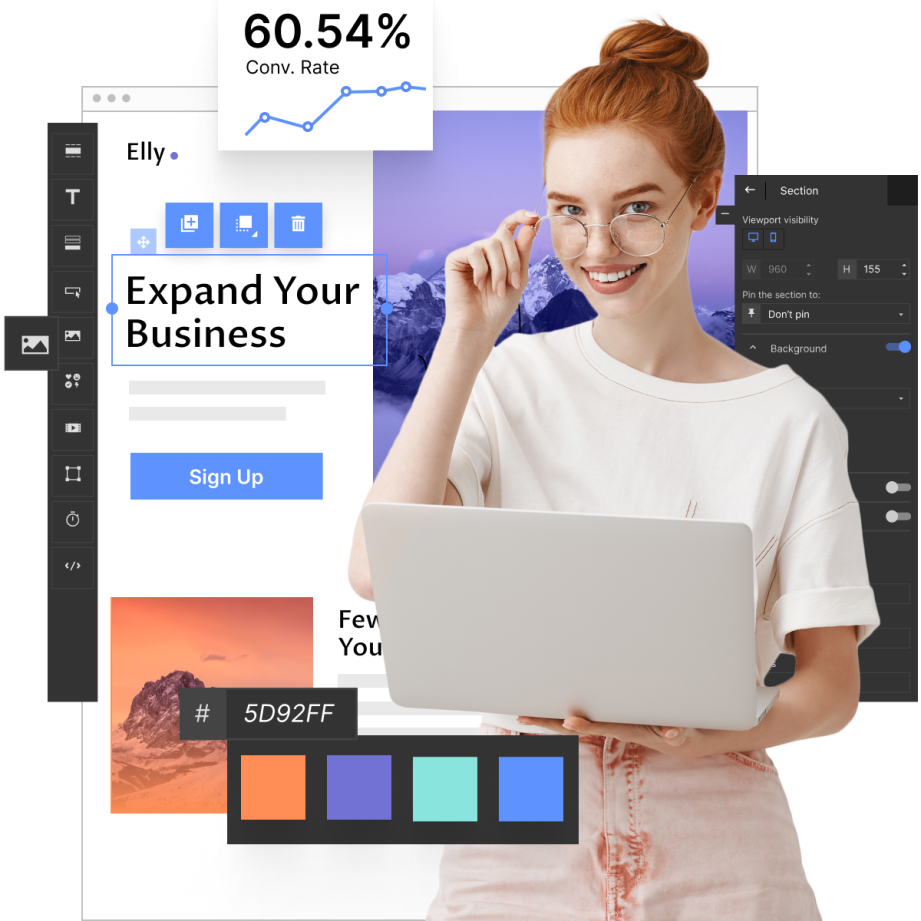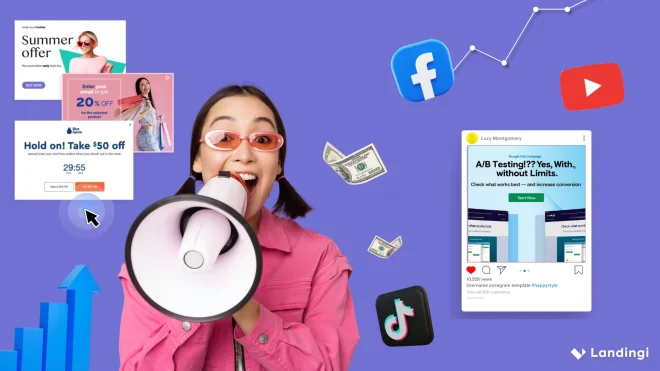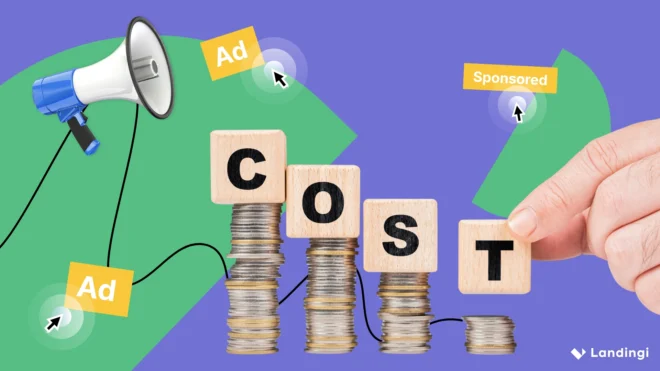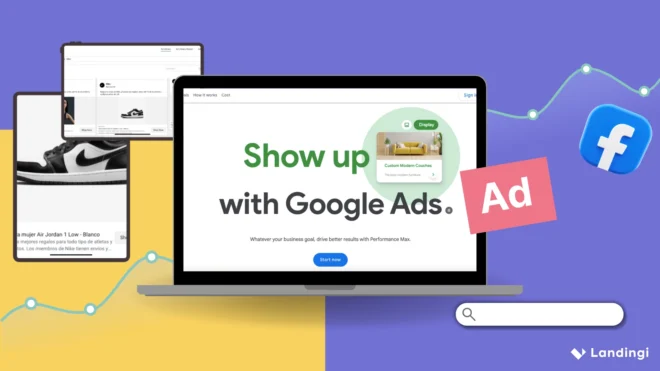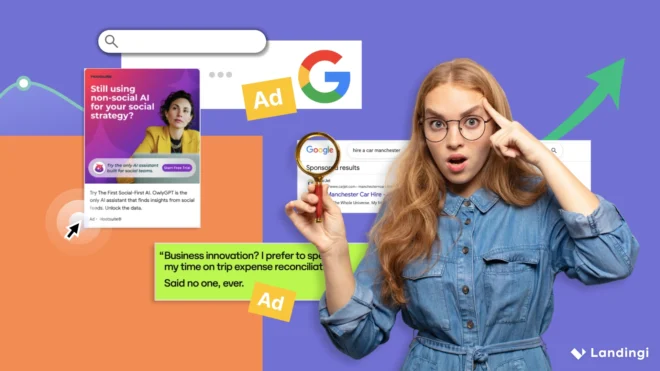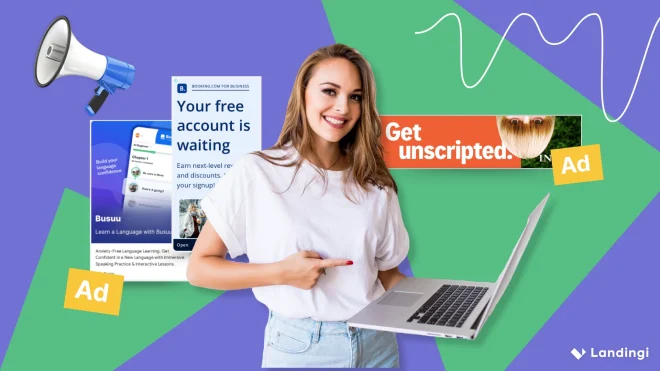Digital advertising is how modern brands get seen, heard, and remembered. It’s the art of promoting your business across online channels, from search engines and social media to video and audio platforms, using data-driven targeting and measurable results.
In fact, global digital ad spend is projected to reach $740 billion by 2025 according to Statista, showing how much brands invest in connecting with audiences where they actually spend time.
What You’ll Learn from this Guide:
- What digital advertising is and how it differs from traditional marketing.
- The main types of digital ads — from search to social, video, and more.
- Proven strategies and tips to boost your ad performance and ROI.
- How to turn ad clicks into real leads and sales.
Whether you’re running your first campaign or scaling across platforms, this guide will help you advertise smarter — and convert better.
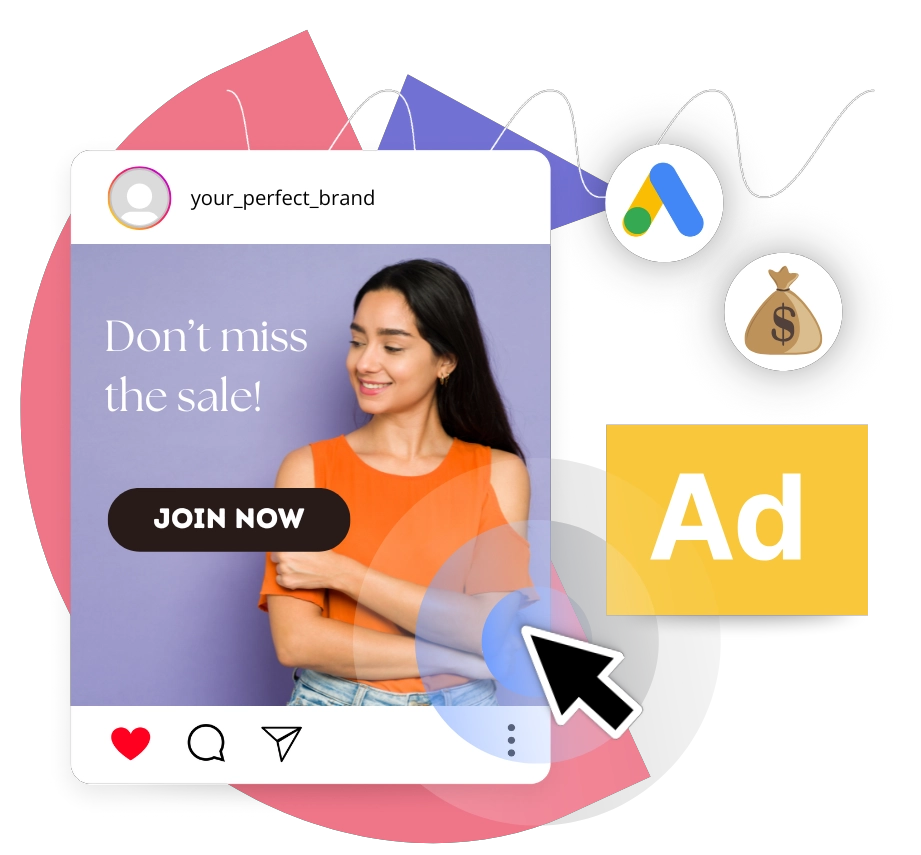
What is Digital Advertising?
Digital advertising is paid promotion of your brand, product or service via internet‑connected platforms, designed to reach and engage target audiences with measurable outcomes.
In simpler terms: when you see an ad on Google, YouTube, Facebook, or an audio stream and click or interact—it’s digital advertising. It’s important because more of your audience is online than ever, and because advanced targeting and tracking make it more efficient than many traditional channels.
6 Different Types of Digital Advertising
Digital advertising takes many forms. Choose a channel and format based on where your audience is active and how to reach them effectively. Below are the main types of digital ads:
1. Search Advertising
Search advertising means showing text-based ads in search engines right when people are actively looking for something—like typing “best running shoes” into Google and seeing a few sponsored results before they even scroll.
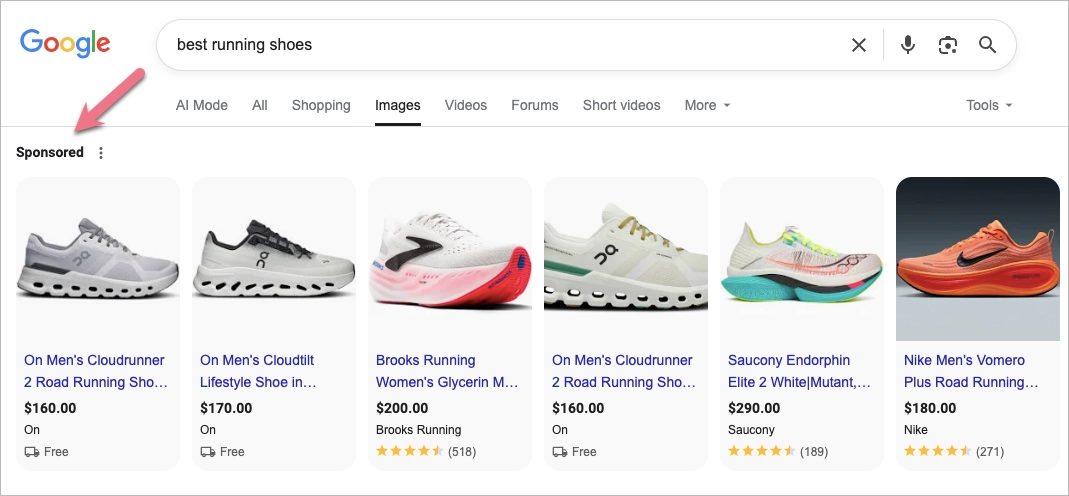
With search ads, you bid on keywords your ideal customer might type. You only pay when someone clicks, so it’s performance–driven. The better your ad and landing page match the search, the higher your chance to appear.
What makes search advertising powerful is timing. You’re not interrupting—you’re showing up when someone wants exactly what you offer. A florist appearing for “flower delivery NYC” isn’t guessing; they’re meeting real demand.
You can narrow things down too. Want to reach people on phones in a specific ZIP code during lunch hours? Easy. Between text ads and product carousels, search gives you a direct line to high-intent traffic.
2. Display Advertising
Display advertising means using visual ads—like banners, sidebar squares, or pop-ups—that appear across websites and apps, often as users scroll through content. It’s all about visuals: static images, animations, or short videos designed to grab attention.

Unlike search ads, display ads don’t wait for intent. They find users based on interests, behavior, or demographics. A ski brand might show ads on weather sites to users in snowy regions—smart, right?
These ads are placed through networks like Google Display Network, giving access to thousands of websites. Advertisers can buy placements directly or programmatically through data-driven platforms.
Good to know: Display ads come in standard sizes (like 728×90 or 300×250) and can include interactive elements. But one challenge? Banner blindness. People tune out boring ads—so visuals and messaging have to stand out.
3. Social Media Advertising
Social media advertising means running paid promotions across platforms like Instagram, TikTok, Facebook, LinkedIn, or X—ads that blend into the feed and look like regular posts, but are marked as “Sponsored.” These can be photo posts, videos, Stories, carousels, or even DMs, all designed to drive engagement and conversions.
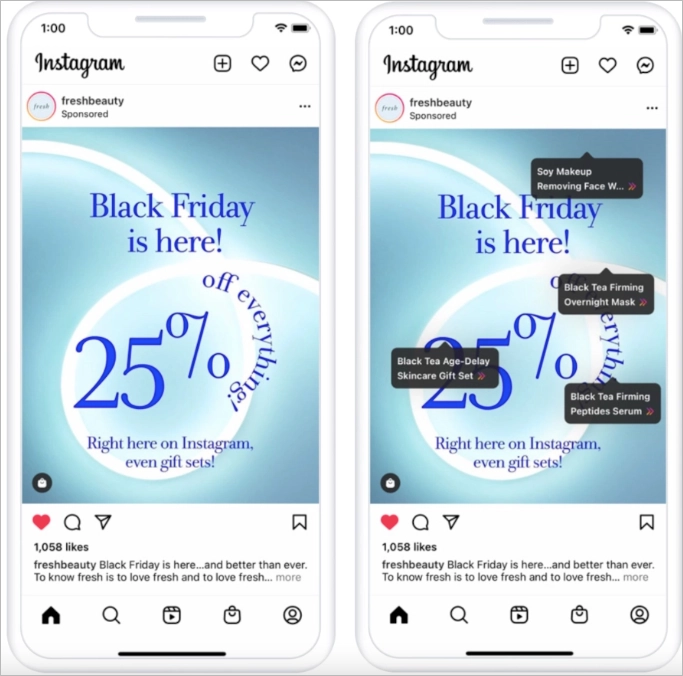
The real power: targeting. Social platforms know a lot—age, location, interests, habits. You can reach “men 30–40 in Austin who love coffee and cycling” with near surgical precision.
You run ads through each platform’s ad manager—setting audience, budget, and goal. Pricing works like an auction: cost per click, impression, view, or lead.
Each platform plays a different role. Meta offers reach and visual storytelling. LinkedIn is gold for B2B. TikTok is where Gen Z lives—and buys. X is fast, reactive, and trend-driven.
4. Video Advertising
Video advertising means showing short video clips as ads—before a YouTube video, in your Instagram feed, between TikTok scrolls, or inside Stories. These ads can play before, during, or outside of video content—and they show up just about everywhere people watch online.
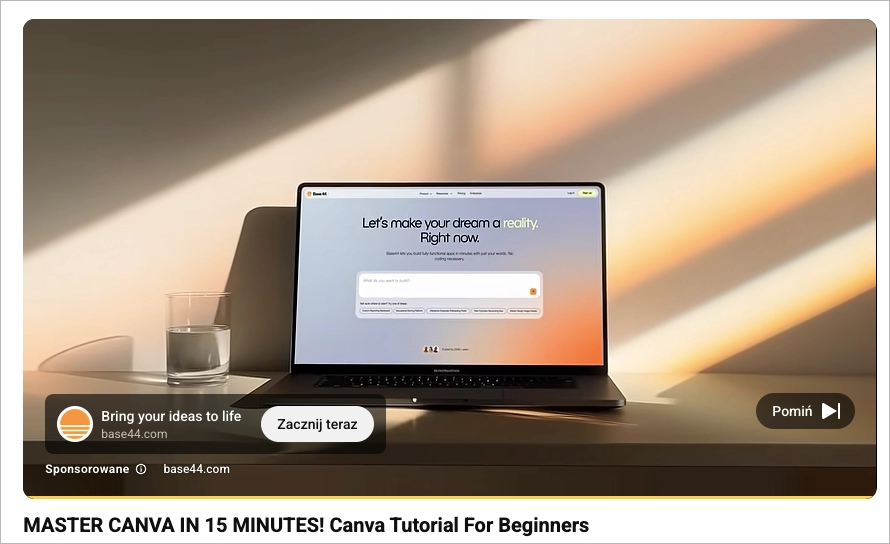
Formats vary: skippable YouTube pre-rolls, 6-second bumpers, non-skippable 15s, or full-screen TikToks. Some autoplay in feeds; others invite clicks or swipes. The key: grab attention fast—most users decide in the first few seconds.
Video stands out because it tells a story with sound, motion, and emotion. A good ad can hook you, demo a product, and trigger action—all in under 30 seconds. Think product unboxings, quick how-tos, or punchy storytelling that drives clicks.
You can run video ads on YouTube via Google Ads, on social platforms like TikTok or Instagram, or programmatically across publisher sites. Campaign goals range from mass awareness to app installs or sales.
With billions of video views daily, the reach is massive. But it’s not just about views—it’s about connection. When done right, video doesn’t interrupt; it engages.
5. Native Advertising
Native advertising means running paid content that blends in with the platform’s look, tone, and format—like sponsored articles on news sites or product listings on Amazon that feel like regular results.
You’ve seen them labeled “Sponsored” or “Recommended for You” under articles. They appear on blogs, in-feed on social media, or inside content discovery boxes from platforms like Outbrain or Taboola.
Brands use native to share useful, story-driven content that subtly promotes their message. A finance blog might feature “Top 5 Investment Tips” that leads to a bank’s site—it reads like advice, not a pitch.
These ads perform well because they respect the reader’s space. They’re built for curiosity, not disruption. But transparency matters—good publishers clearly label them as sponsored.
Native campaigns can run across publisher networks or through direct partnerships with media outlets. The key is to match tone, style, and value. When done right, native ads feel like content people actually want to read.
6. Audio Advertising
Audio advertising means placing ads inside music or podcast streams—like hearing “We’ll be right back after this message…” while listening on Spotify or Apple Podcasts. These ads reach people when they’re not looking at a screen, but still fully tuned in.
What makes audio special? It reaches people when their eyes are busy, but their ears—and attention—are wide open. You’re not competing with visuals. You’re speaking directly, through tone, music, and storytelling.
These ads show up between songs on platforms like Spotify or as host-read messages in podcasts. They usually run 15 to 60 seconds and feel like part of the listening experience—not a break from it.
Targeting is smarter than old-school radio. Advertisers can choose listeners by location, age, genre, even specific playlists. A local café might run morning ads on jazz playlists; a tech brand might sponsor a startup podcast.
Platforms like Spotify and Pandora also show clickable banners while the ad plays. Some even offer follow-up CTA cards that appear after the audio ends, making it easy for listeners to act.
One of the biggest wins? Completion. Most audio ads get heard to the end—because there’s often no skip button. And podcast ads, especially host-read ones, feel personal and trusted—making them unusually effective.
Benefits of Digital Advertising for ad Type
Different types of digital advertising come with different strengths. That’s the beauty of it—each one serves a purpose depending on your goals, audience, and message.
Let’s break down what each ad type does best and when to use it. Think of this as your cheat sheet for picking the right tool for the job.
1. Benefits of Search Ads
Search ads put your brand in front of people who are already looking—literally typing in what they want. That high intent means better chances of clicks turning into sales or leads.
Because you’re targeting specific keywords, you control when and where your ads show. Add in negative keywords, and you’re only paying for the traffic that actually matters.
Search campaigns are highly measurable. You see exactly what’s working—down to each keyword—and can optimize in real time. Plus, Google rewards strong ads with lower costs.
Best of all, you don’t have to wait. Search ads put you at the top of results instantly, making them perfect for launching fast or breaking into competitive spaces.
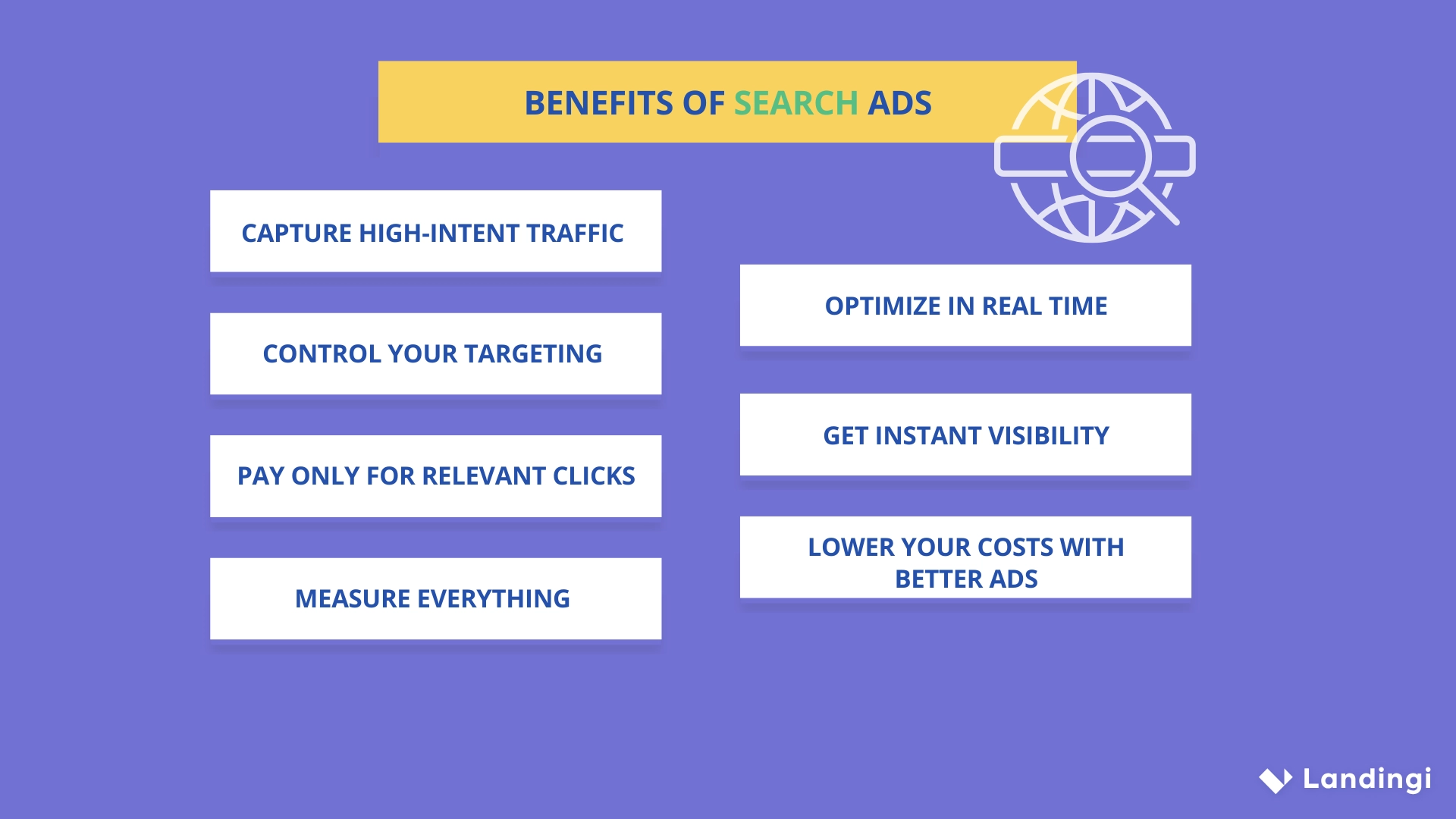
2. Benefits of Display Ads
Display ads are everywhere—on news sites, blogs, apps—giving you massive reach across the web. They’re ideal for building brand awareness at scale, keeping your name in front of the right people.
With images, animations, or video, display ads grab attention in ways text can’t. Even if someone doesn’t click, a bold visual can stick and boost brand recall over time.
They’re also cost-friendly. Display clicks are often much cheaper than search—so you can drive volume without burning budget, especially for top-of-funnel campaigns.
Targeting is flexible: choose specific sites, topics, interests, or behaviors. And with retargeting, you can follow up with users who’ve already visited your site—perfect for re-engaging or nudging toward a sale.
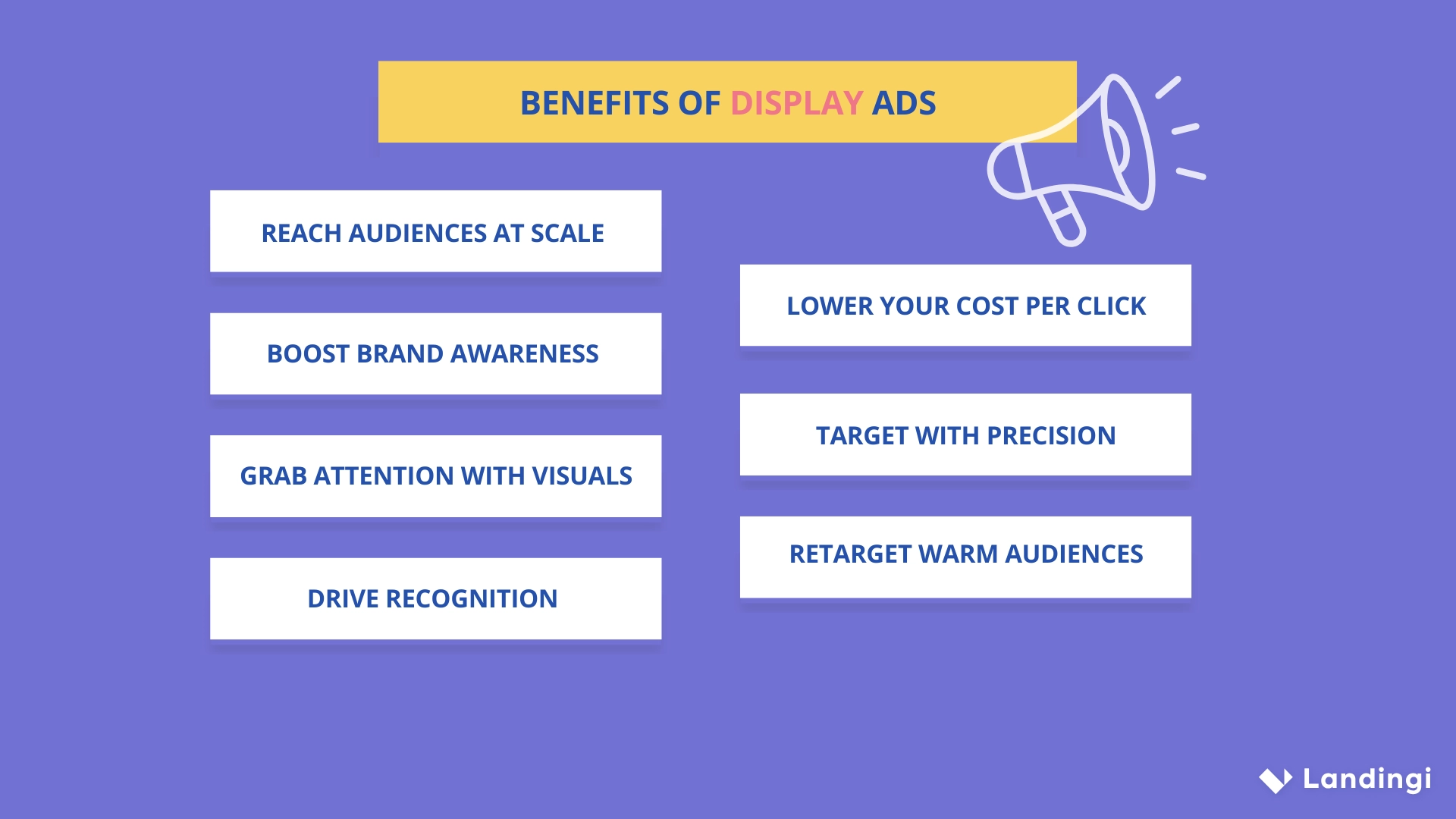
3. Benefits of Social Ads
Social ads give you unmatched reach with laser precision. With billions of users across platforms, you can target by age, interests, behavior—even life events—so your message hits exactly the right audience.
They don’t just show up—they get noticed. People like, share, comment, tag friends. That interaction turns ads into content, and content into conversions.
The formats are built to engage: Reels, Stories, carousels, influencer posts. Whether you’re riding a TikTok trend or showing off product features on Facebook, there’s room to be creative and effective.
Social is mobile-first and youth-driven. If you’re targeting Millennials or Gen Z, this is their playground. A smart campaign can spark shares, comments, even viral moments—amplifying your message without paying extra. And every like or comment is a visible proof your brand is worth noticing.
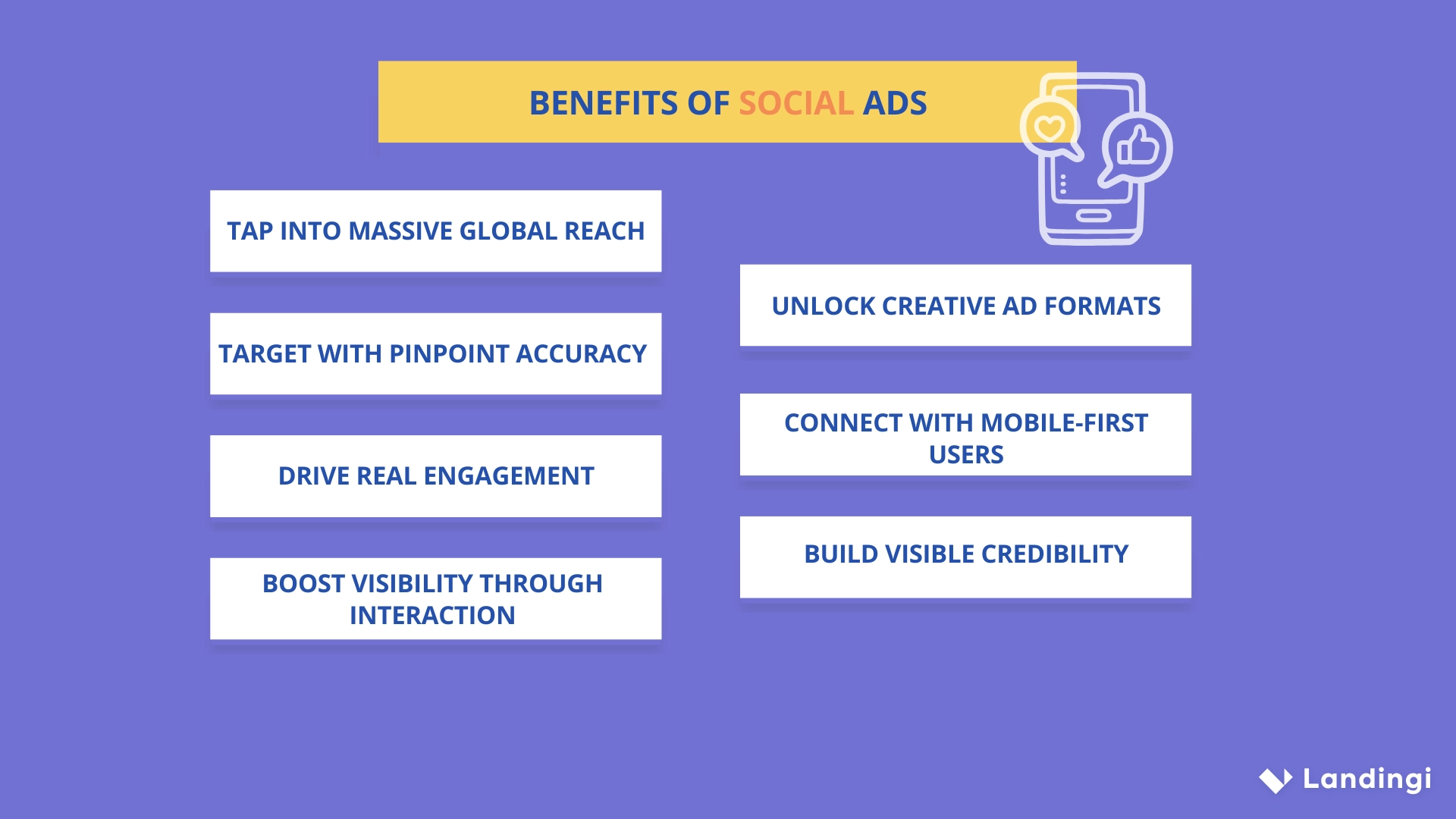
4. Benefits of Video Ads
Video captures attention fast—with visuals, music, and emotion that static ads can’t match. It’s ideal for storytelling, brand recall, and making complex ideas feel simple.
You can show your product in action, deliver a message in 15 seconds, or explain a feature visually—all while holding attention longer than a banner ever could.
Video works across platforms—YouTube, TikTok, Instagram, CTV—helping you reach audiences where they already stream. YouTube alone generated over $30B in ad revenue in 2024.
It’s measurable and flexible. You see who watched, how long, and whether they clicked—so every second of storytelling can drive real results.
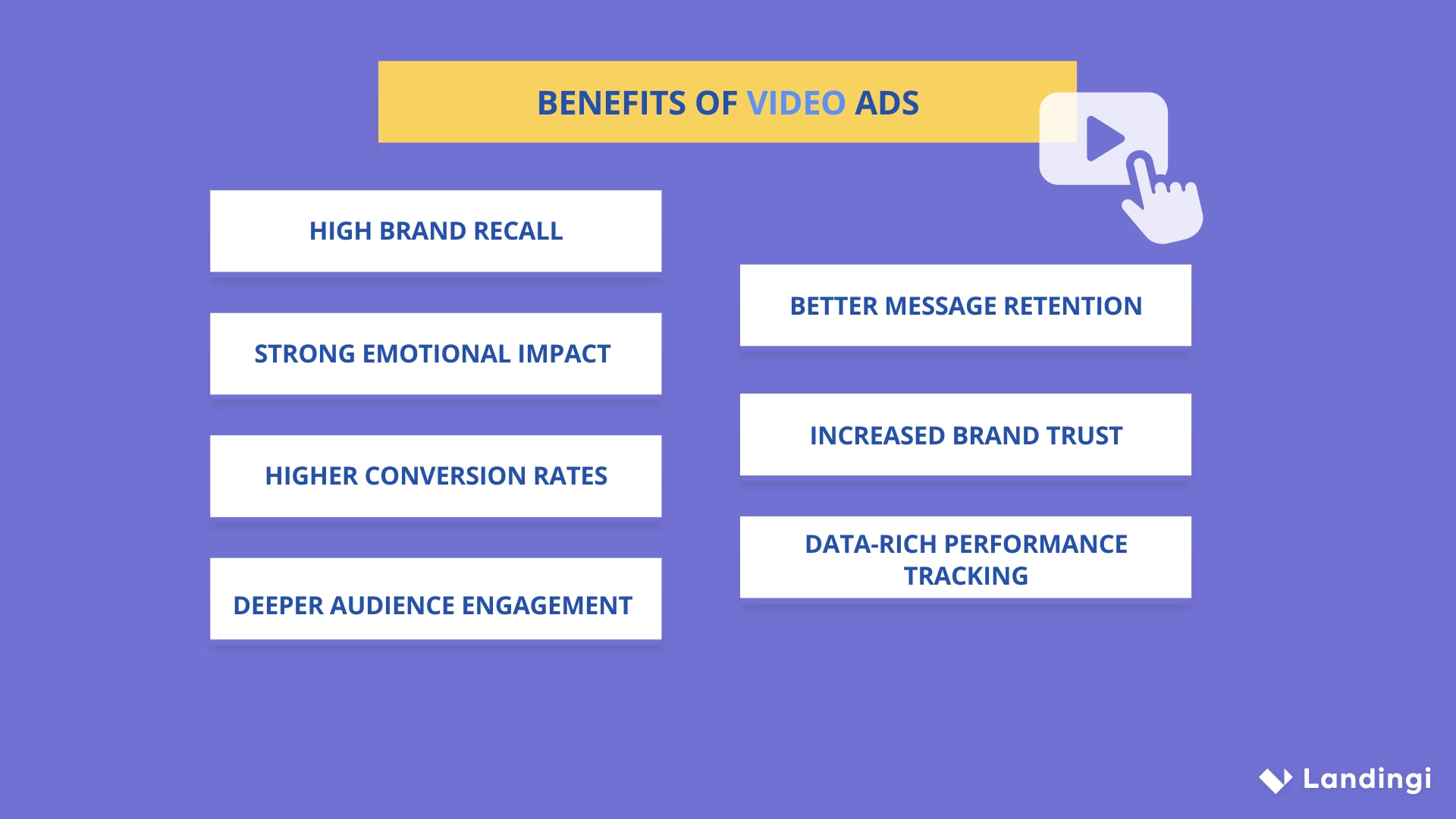
5. Benefits of Native Ads
Native ads blend into their environment, so users engage with them like regular content.
The experience is smooth, not disruptive. Whether it’s a sponsored article on a blog or a promoted post on social, native ads feel like part of the feed—not an interruption.
They shine on mobile. Native formats fit naturally into mobile screens, load faster, and outperform intrusive banners in both attention and engagement.
Plus, they supercharge your content marketing. Native ads promote blogs, videos, or guides—positioning your brand as helpful and driving ongoing traffic long after the ad spend ends.
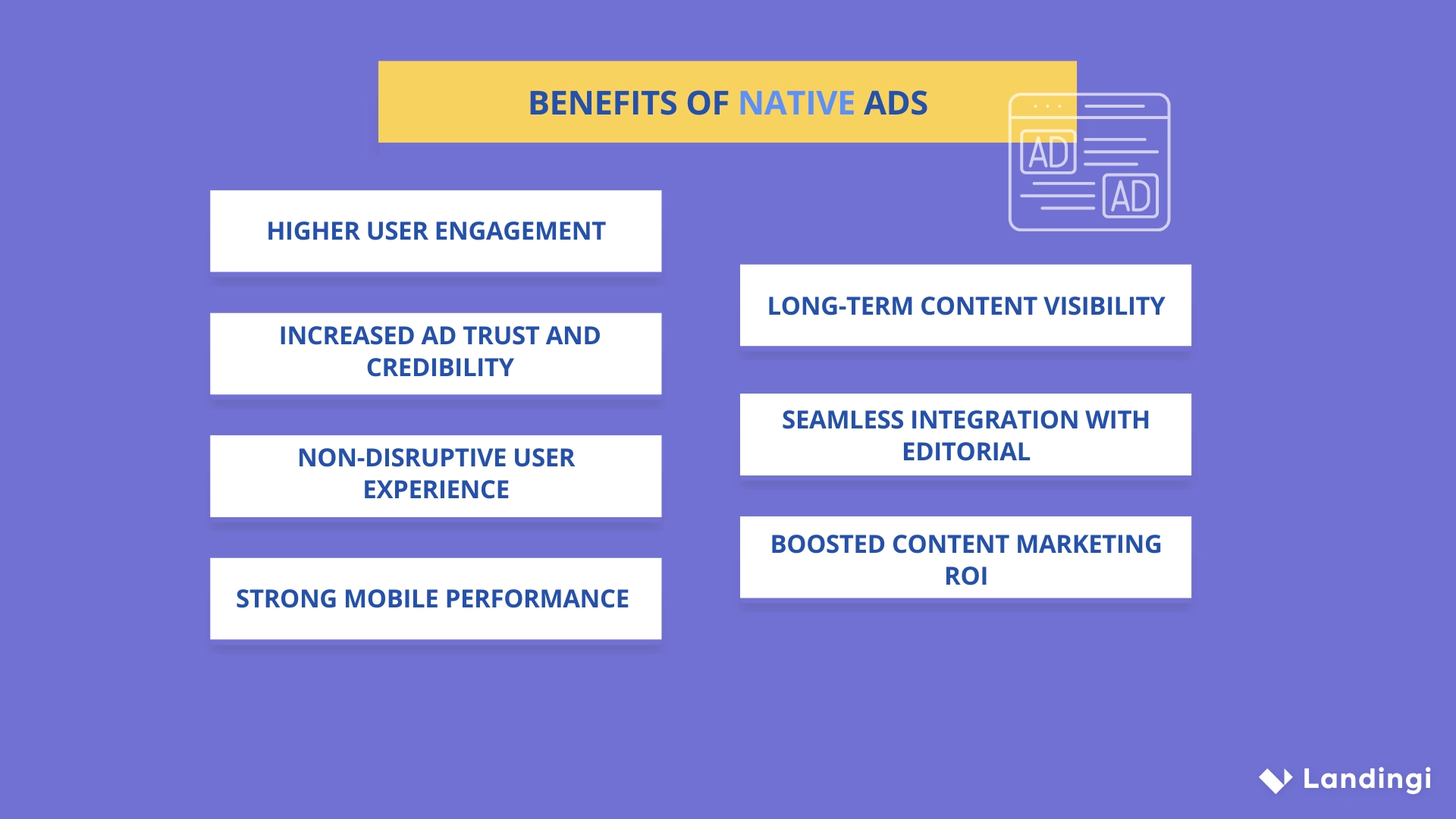
6. Benefits of Audio Ads
Audio ads often get full attention—especially during streaming or podcasts, where users rarely skip. Some formats even boast 90%+ completion rates, far higher than most video ads.
Podcast ads feel like personal recommendations, especially when read by hosts. That trust drives high recall, response, and a deeper emotional connection.
With music, voice, and sound design, audio sparks imagination—creating a scene in the listener’s mind. A strong script can tell a whole story in 30 seconds without a single image.
Audio reaches people in screen-free moments—driving, working out, cooking—when other ad formats can’t. It fills gaps in the day, turning passive time into brand touchpoints.
It’s also smart and targeted. Platforms like Spotify let you reach users by age, location, and even playlist type—programmatically and in real time.
Best of all, audio reinforces other channels. A user might scroll past your video but remember your jingle later while streaming—creating cross-format lift without ad fatigue.
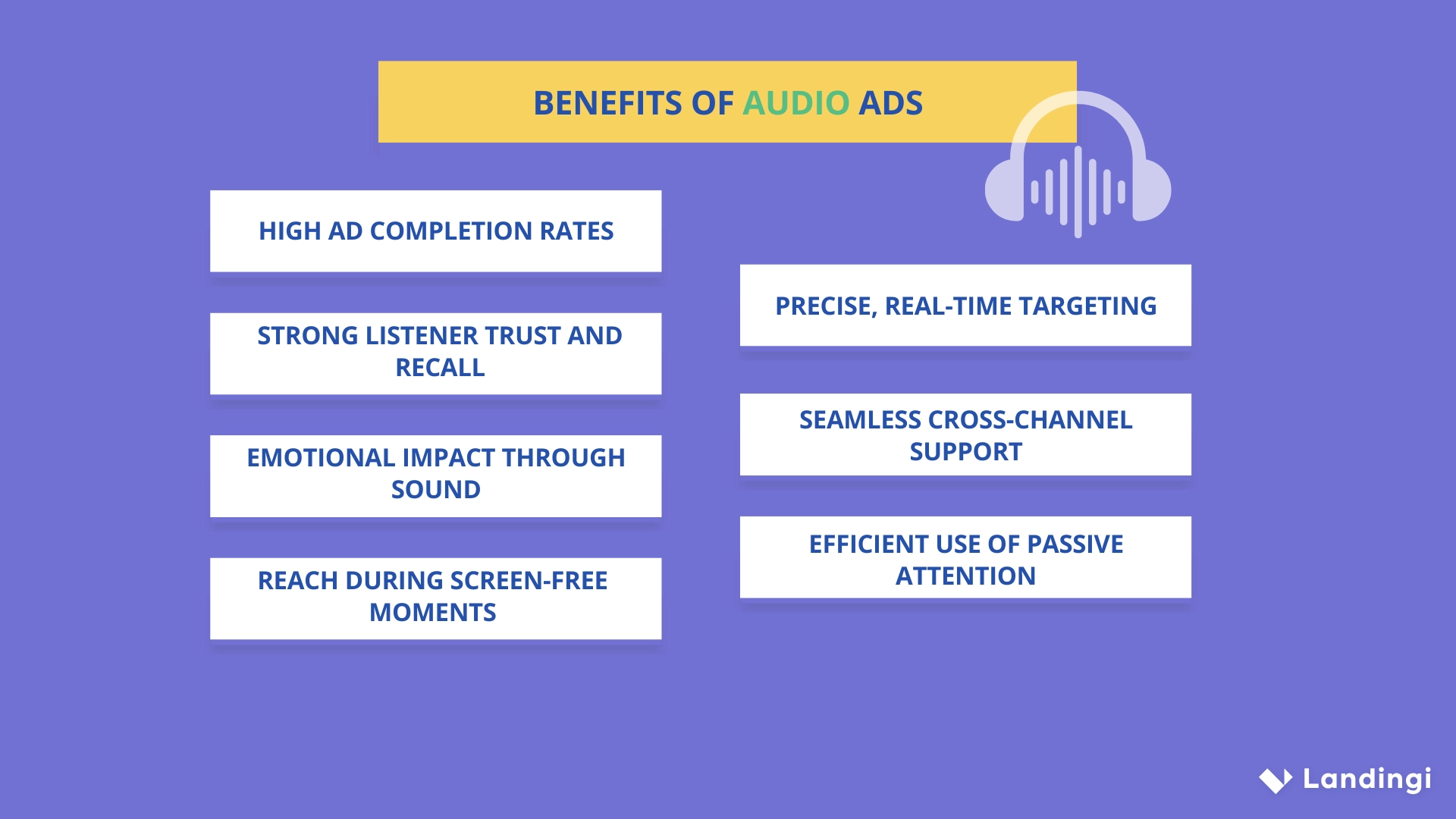
Digital Advertising Examples for Ad Type
Digital advertising examples help show what each ad type looks like in action. From driving search intent to boosting brand awareness, different formats play different roles.
Below are real-world examples that show how each format works—and why it works.
1. Google Ads Example
Google Ads examples like this one from Miro show how clarity and keyword relevance drive clicks. The headline nails a strong match (“workspace for innovation”), while the subheadline builds trust fast with social proof (“Millions of users…”).
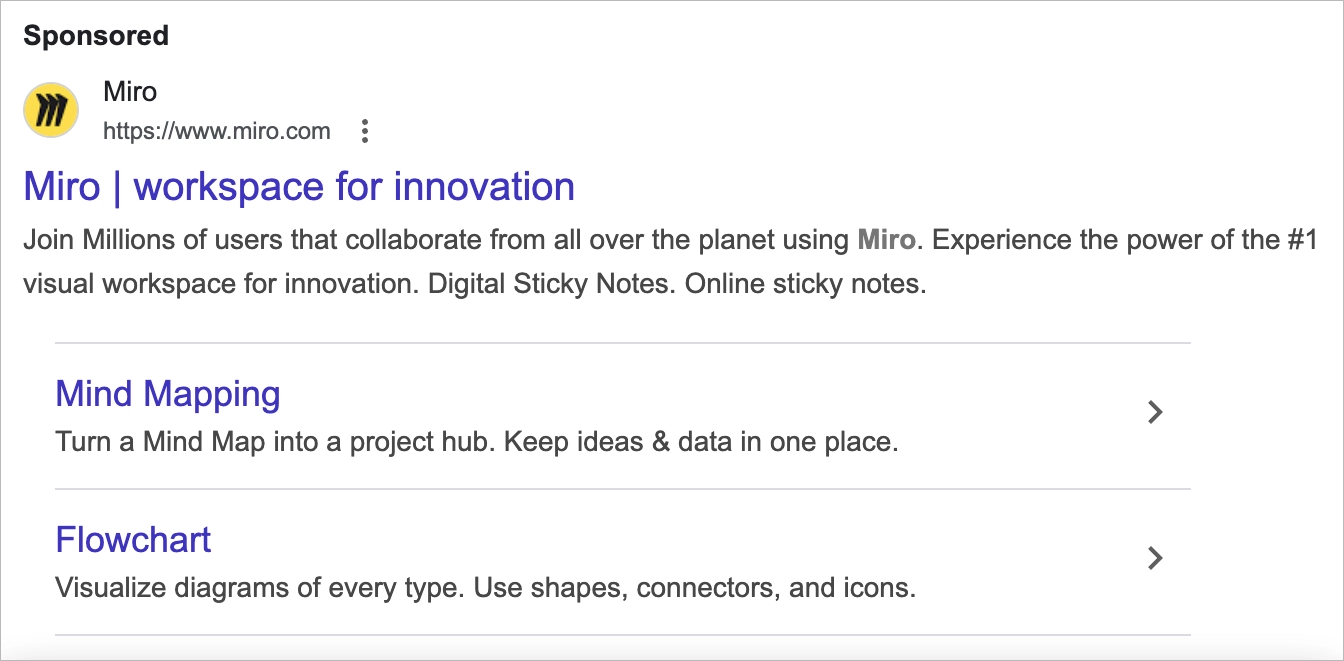
What makes it smart? The sitelinks act like mini-CTAs — directing users straight to specific tools like Mind Mapping or Flowcharts. It’s not just about visibility, it’s about giving users a head start before they even land.
2. Facebook Ads Examples
This Facebook ad from Surfer hits the sweet spot—clear, helpful, and easy on the eyes. The message is sharp (“Fix Old Content. Win New Traffic”), the visual is clean and scroll-stopping, and the UI-style graphics hint at real product value.
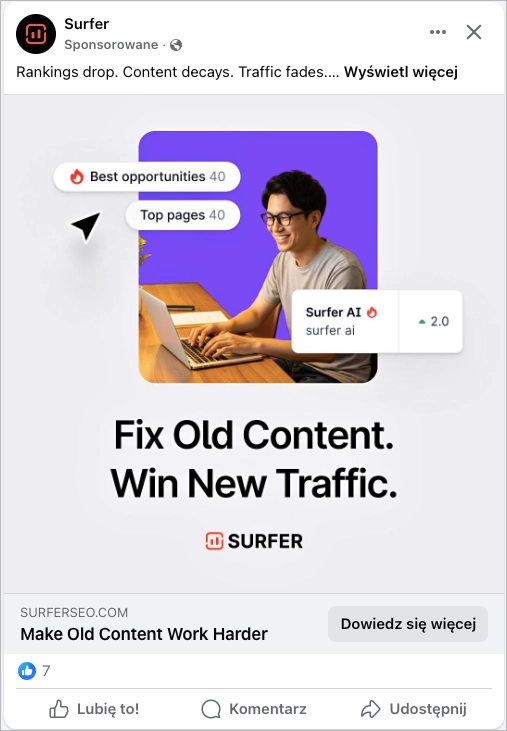
That’s what works on Facebook: ads that feel like useful posts, not loud interruptions. When done like this, they blend in just enough to get noticed—and clicked.
3. Instagram Ads Example
Hostinger’s Instagram ad is a great example of a native feed ad done right. The bold, space-themed visual and clever “We are on a miss1on” copy grab attention instantly, while the clean layout and “Get Offer” CTA blend seamlessly into the Instagram feed.
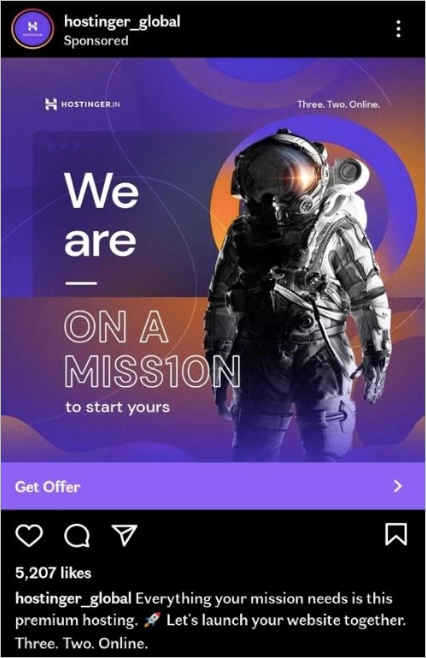
Like many top-performing Instagram ads, it mimics the platform’s design-forward aesthetic—making it feel like content, not just an ad—while still driving clear action.
4. TikTok Ads Example
TikTok ads work best when they feel native to the platform—and this K18 example nails it. It keeps things real and relatable, showing the product trio in a salon setting with no flashy effects—just a slice of real life. It feels more like a friend’s recommendation than a brand push, which is exactly why native TikTok ads work.
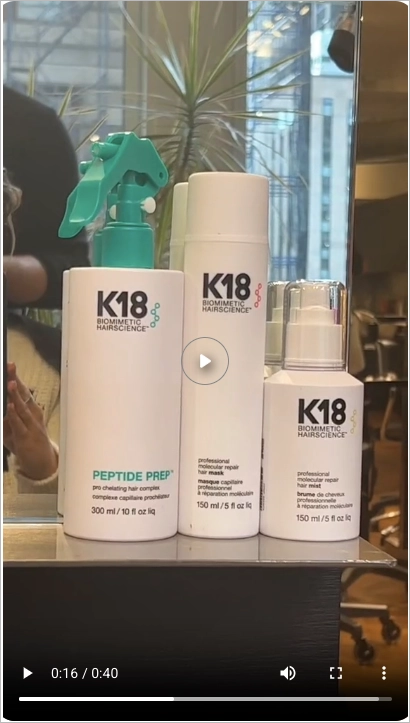
Like many top-performing TikTok ads, it’s simple, authentic, and lets the product speak for itself—perfect for a platform built on everyday moments and beauty transformations.
5. LinkedIn Ads Example
This LinkedIn ad from Salesforce is a great example of a carousel format done right. Each card delivers a focused, benefit-driven message—visually bold, professionally polished, and easy to swipe through.
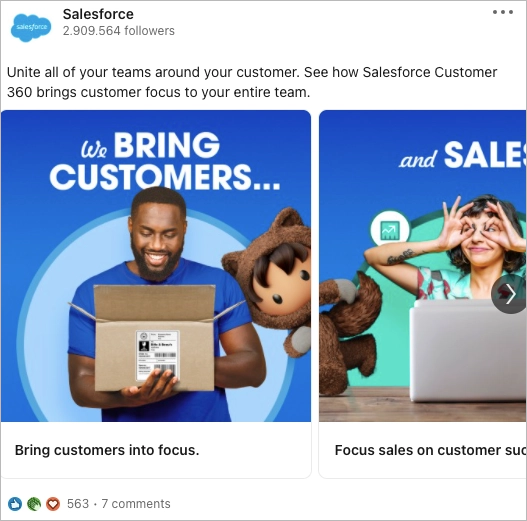
Carousels work especially well on LinkedIn because they break down complex B2B value props into bite-sized, scroll-stopping content. For brands targeting decision-makers or enterprise buyers, this format builds narrative and engagement in one go.
6. YouTube Ads Example
This YouTube preroll ad from Uber Eats nails the basics: it’s short, direct, and immediately relevant. In just 6 seconds, it introduces Uber Eats Pass and plants the value prop—no fluff, just fast info before the viewer can skip.
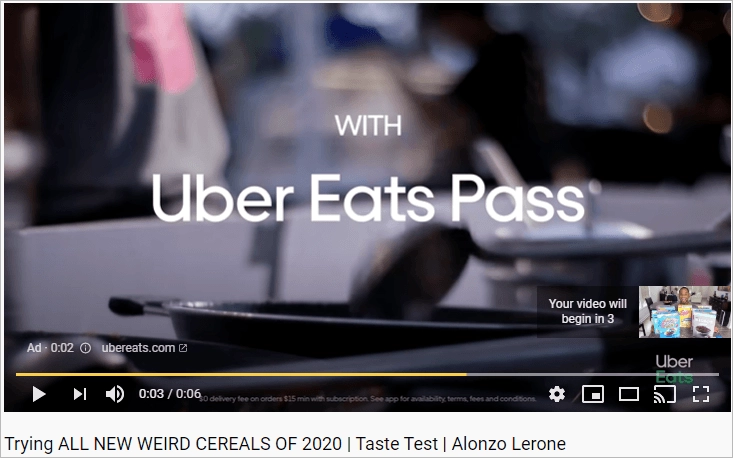
The real strength: smart targeting. It likely reached users already using food delivery apps, making it feel more like a helpful nudge than a random interruption. That’s how YouTube ads work best—by matching message to moment.
7. Display Ads Example
This Airbnb display ad is a great example of responsive creative done right. The eye-catching image of a unique stay in New Zealand pairs perfectly with the short, punchy headline: “Stay, on the move.” It’s visually driven, mobile-friendly, and feels like a natural part of the page—not just an interruption.
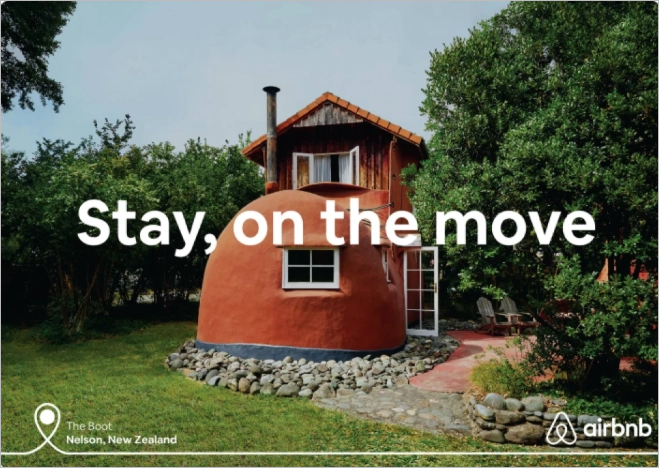
What makes it work? Stunning visuals, a clean message, and Google’s smart ad delivery. Responsive display ads like this adjust to the viewer, mixing image and copy to fit different screen sizes and contexts. Add retargeting, and suddenly you’re not just showing ads—you’re inspiring future trips.
8. Native Ads Example
This native ad from Allbirds and The New York Times is a masterclass in blending content and brand values. It looks and reads like an NYT editorial, but it’s clearly labeled as a paid post. The immersive experience—animations, sound, scroll effects—draws readers in without feeling like a hard sell.
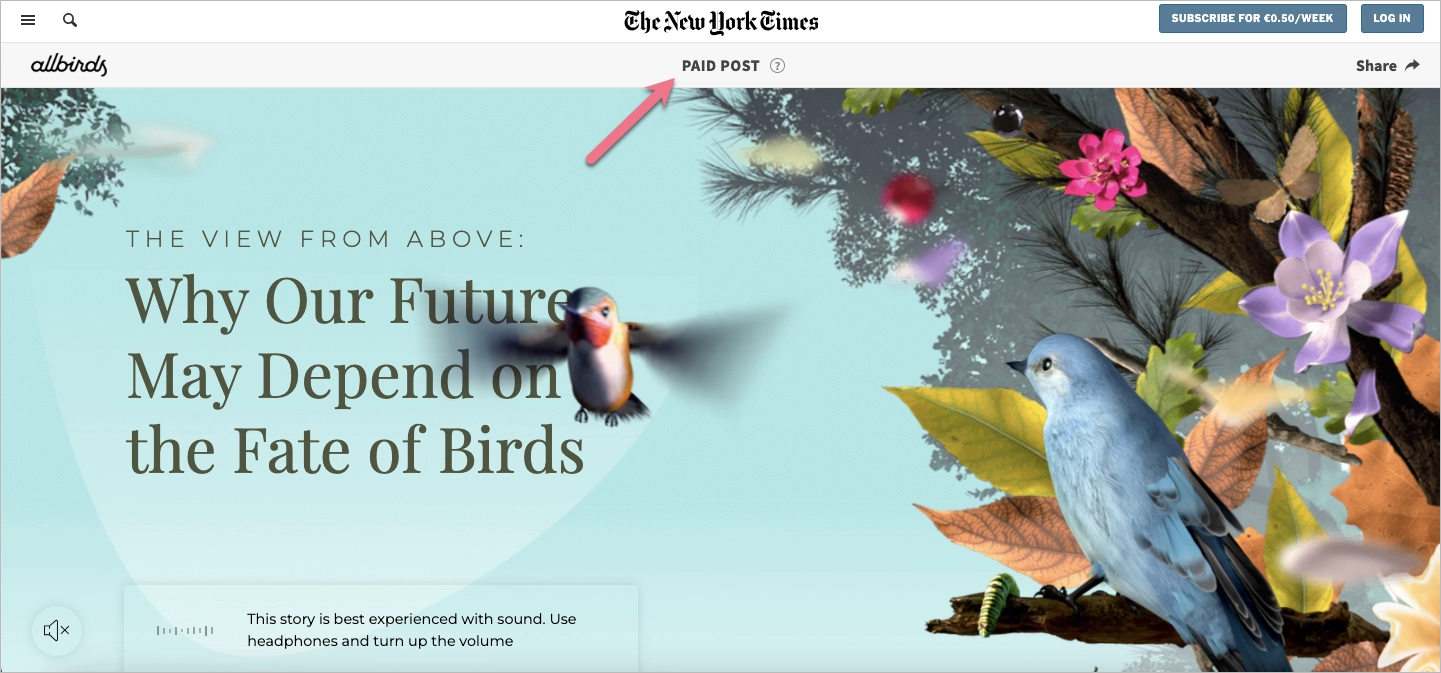
Why does it work? It tells a real story that aligns with Allbirds’ sustainability mission while delivering genuine value to the reader. This is native at its best: branded content people actually want to engage with.
9. Audio Ads Example
Audio ads like this local campaign from Pepsi show how sound can create real connection. They ran custom, hyper-targeted spots in 10 U.S. cities—each one built around iconic local foods (like Philly cheesesteaks or Chicago deep-dish) and paired with a cold Pepsi.
Voice actors from each region brought authenticity to every spot, adding local flair and credibility. It wasn’t just a generic ad—it felt personal. And it worked: Pepsi saw a noticeable lift in brand favorability and purchase intent. Proof that when audio speaks your language (literally), people listen.
Digital Advertising Tips & Best Practices
Digital ads work best when backed by strategy. Below, you’ll find expert tips for each major ad type—based on real-world data and what actually drives results.
Use these to boost ROI, avoid common mistakes, and get more from every click, view, or impression.
#1 Search Advertising Tips
To win with search ads, it’s not about chasing the most traffic—it’s about attracting the right traffic. These tips will help you turn intent into conversions and clicks into customers.
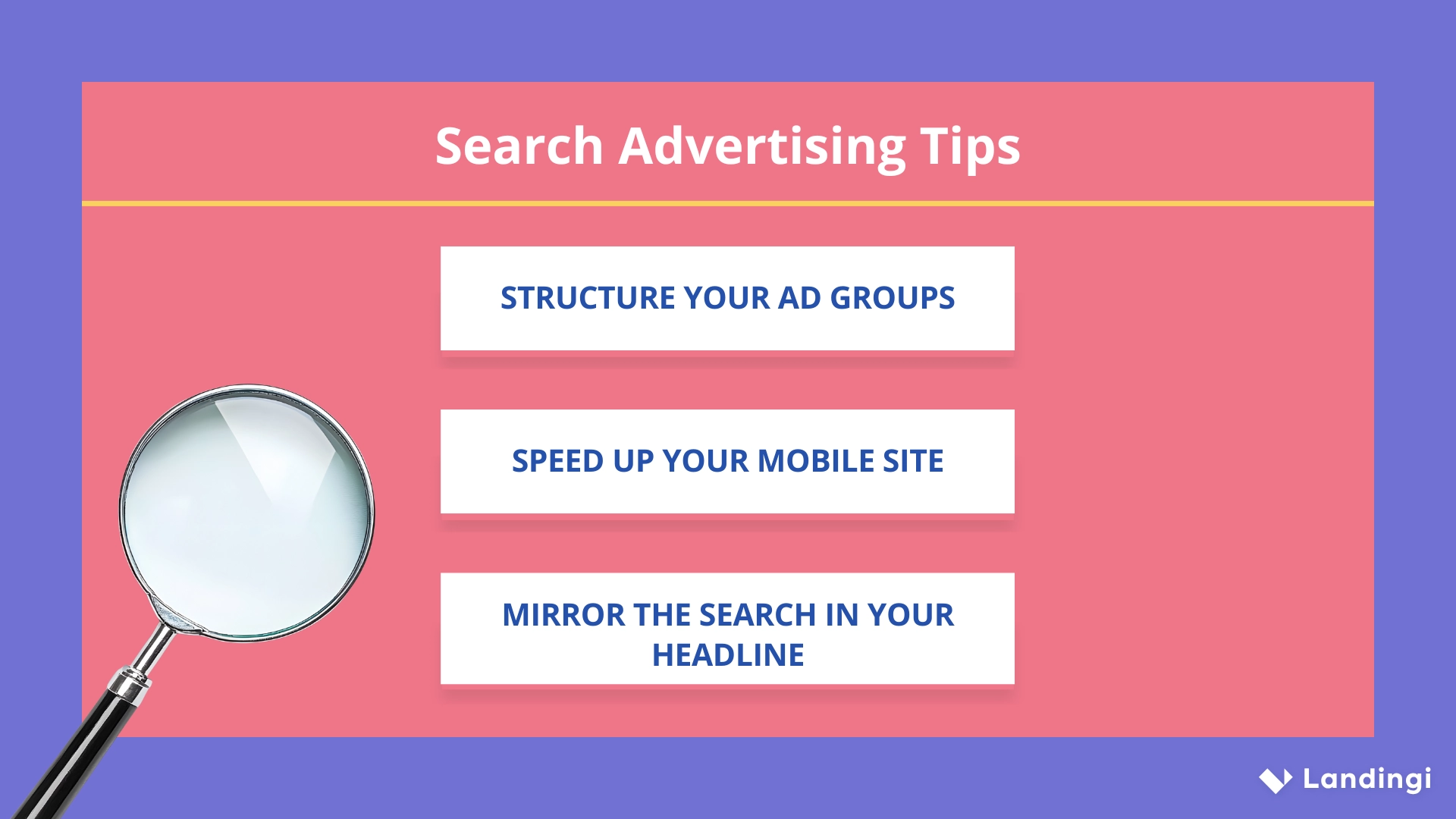
1. Structure your ad groups
Your ad group structure directly affects your costs and performance. When your keywords, ads, and landing pages are tightly aligned around a single theme, your Quality Score goes up, your CPC goes down, and your relevance skyrockets.
Think of each ad group as a micro-campaign focused on one intent. If you’re advertising sneakers, don’t mix “white running shoes,” “trail shoes,” and “best gym shoes” into one group. Each of those deserves its own keyword list, ad copy, and landing page, because Google rewards relevance—and users click when they feel like you “read their mind.”
Here’s how to do it right:
- Group keywords by topic, product type, or intent—not just volume.
- Match ad headlines to the group’s main keyword.
- Make sure the landing page delivers exactly what the ad promises.
It makes optimization faster, improves performance, and lets you scale smarter. Messy structure = messy data. Clean structure = clean wins.
2. Speed up your mobile site
Every second your page takes to load kills your conversion rate. If your site is slow, your bounce rate spikes—and your ad budget goes up in smoke.
3. Mirror the search in your headline
When your ad headline echoes the exact words someone typed, it builds instant trust. It feels like you’re answering their question—not interrupting them.
Example: If someone searches “CRM for photographers,” an ad that literally says “CRM for Photographers” will likely outperform a generic “All-in-One CRM Software.”
#2 Display Advertising Tips
With display ads, you’re not catching people while they search—you’re catching them mid-scroll, mid-article, or mid-game. That means you have less time to earn their attention—and more creative tools to do it. Here’s how to make every impression count.
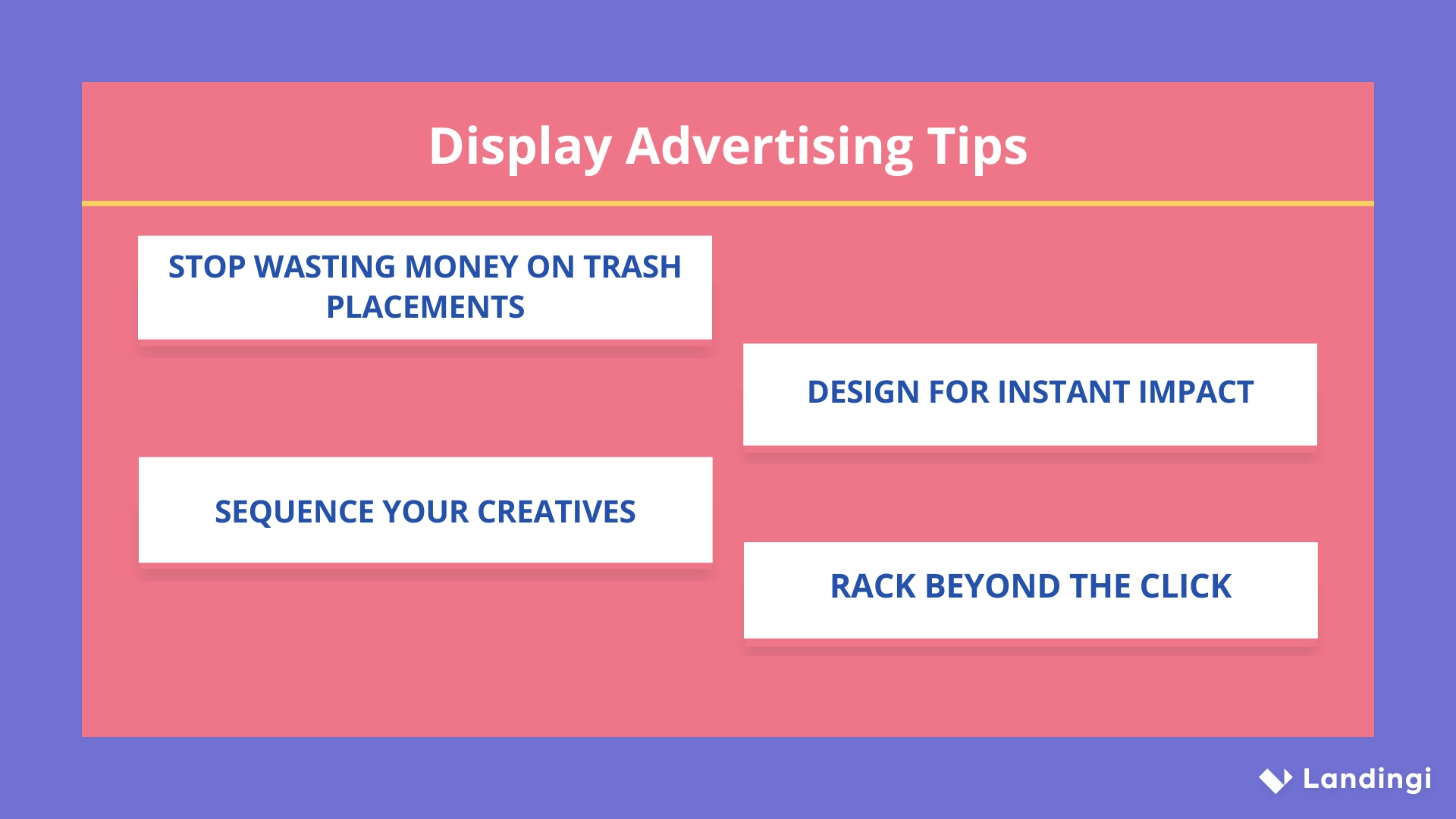
1. Stop wasting money on trash placements
Not all impressions are created equal. In display advertising, you might be targeting the right audience—but still showing up in the wrong places.
Display networks are massive. That’s both the beauty and the danger. If you don’t regularly audit your ad placements, your well-designed banners might end up sandwiched between two unskippable mobile game levels—or on a site that hasn’t been updated since 2013.
What happens next? Accidental clicks, wasted spend, and no conversions in sight.
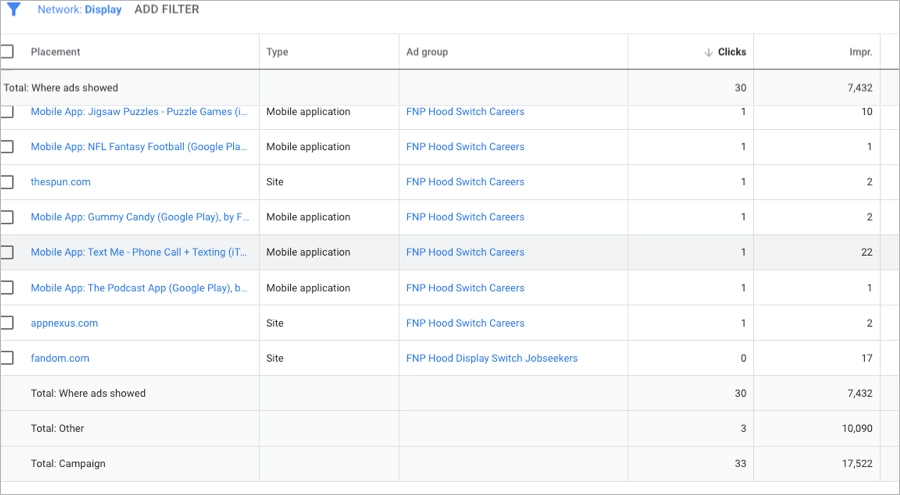
Here’s a real example:
One client had a killer campaign running with strong targeting: in-market users looking for project management tools. But when we checked their placements? 32% of their impressions came from mobile apps for toddlers. Not only were they irrelevant, but most of the clicks were accidental. Burned budget, zero ROI.
What to do instead:
- Run placement reports regularly in Google Ads.
- Exclude mobile apps, especially games and utility apps, unless you’re intentionally targeting those users.
- Use topic and category exclusions to stay off low-quality or unrelated content.
- Highlight your top-converting placements and consider using managed placements to focus your spend there.
Display is powerful but only if your ads appear in places your audience actually trusts and engages with.
2. Design for instant impact
You’ve got one second—literally. Your visual needs to stop the scroll before the brain even fully processes it. Use bold colors, clear contrast, and a single focal point that jumps out without noise.
3. Sequence your creatives
Treat your ads like chapters in a mini story. Don’t just show the same image 10 times. Build curiosity and guide users through awareness, interest, and desire.
Example:
Ad 1: “Feeling stuck with marketing?”
Ad 2: “Here’s how agencies cut campaign time in half.”
Ad 3: “Try it free—no credit card needed.”
Sequenced ads create progression, not banner fatigue.
4. Track beyond the click
A banner with a 5% CTR is useless if users bounce 2 seconds after landing. Set up conversion tracking, scroll depth, time on page—or better yet, measure assisted conversions.
Why this matters: Display is a top-of-funnel play, but post-click behavior shows what’s really working.
From impressions to conversions – Landingi helps your display ads drive real results!
#3 Social Advertising Tips
Social ads don’t live in a vacuum—they live between selfies, memes, and hot takes. If you want them to work, they need to feel native to the feed and hit hard on strategy. Here’s how to make your paid social ads actually get noticed—and clicked.
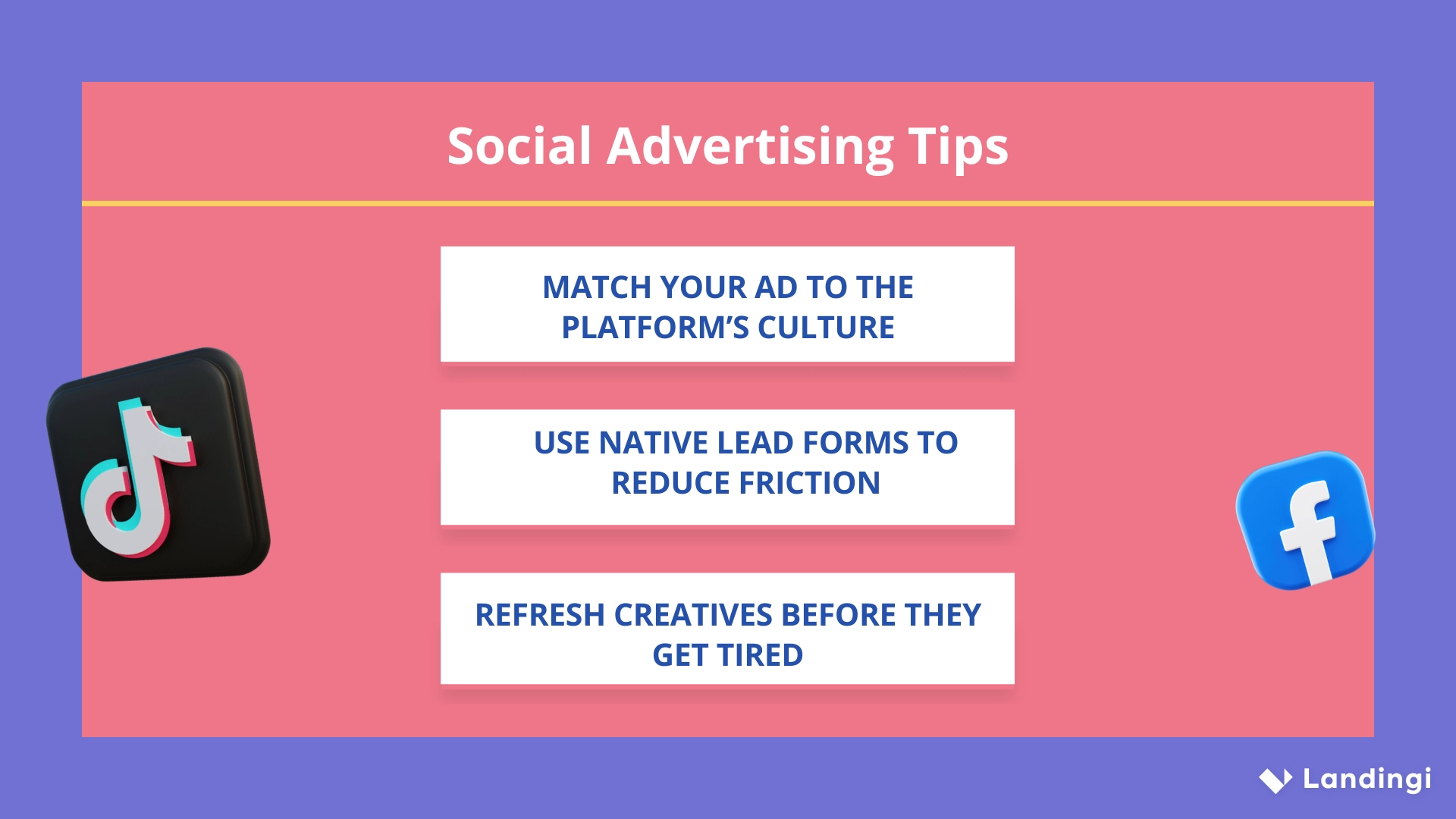
1. Match your ad to the platform’s culture
A polished B2B quote card that crushes on LinkedIn would flop instantly on TikTok. Same goes for using stiff stock photos on Instagram—people will scroll right past.
What to do: Design your creative and tone for the platform. Be raw and fast on TikTok, aesthetic and emotional on Instagram, direct and smart on LinkedIn.
2. Use native lead forms to reduce friction
Every click you save = more conversions. On mobile especially, native lead forms (like Meta Lead Ads or LinkedIn Lead Gen Forms) keep users in-platform, reduce load time, and boost form completion.
Pro tip: Pre-fill fields with profile data (where possible), and make the offer feel like a quick win: “Get the checklist,” “Book a free consult,” “Join the waitlist.”
3. Refresh creatives before they get tired
Ad fatigue sets in fast on social. If you’re seeing CTRs drop or CPMs creep up, chances are people are just over it. And even if you’re still getting clicks, conversions might tank if the ad feels stale.
What to do: Rotate your visuals and copy every 1–2 weeks. Test small variations—new headlines, different formats, adjusted CTAs—to keep your message fresh without rebuilding from scratch.
Bonus: Use frequency + engagement drop-offs as early warning signs. The scroll never sleeps.
#4 YouTube Advertising Tips
YouTube isn’t just a video platform—it’s the second-largest search engine. And your ads live between cat videos, how-to’s, product reviews, and deep dives. That means your creative and targeting have to work fast and smart.
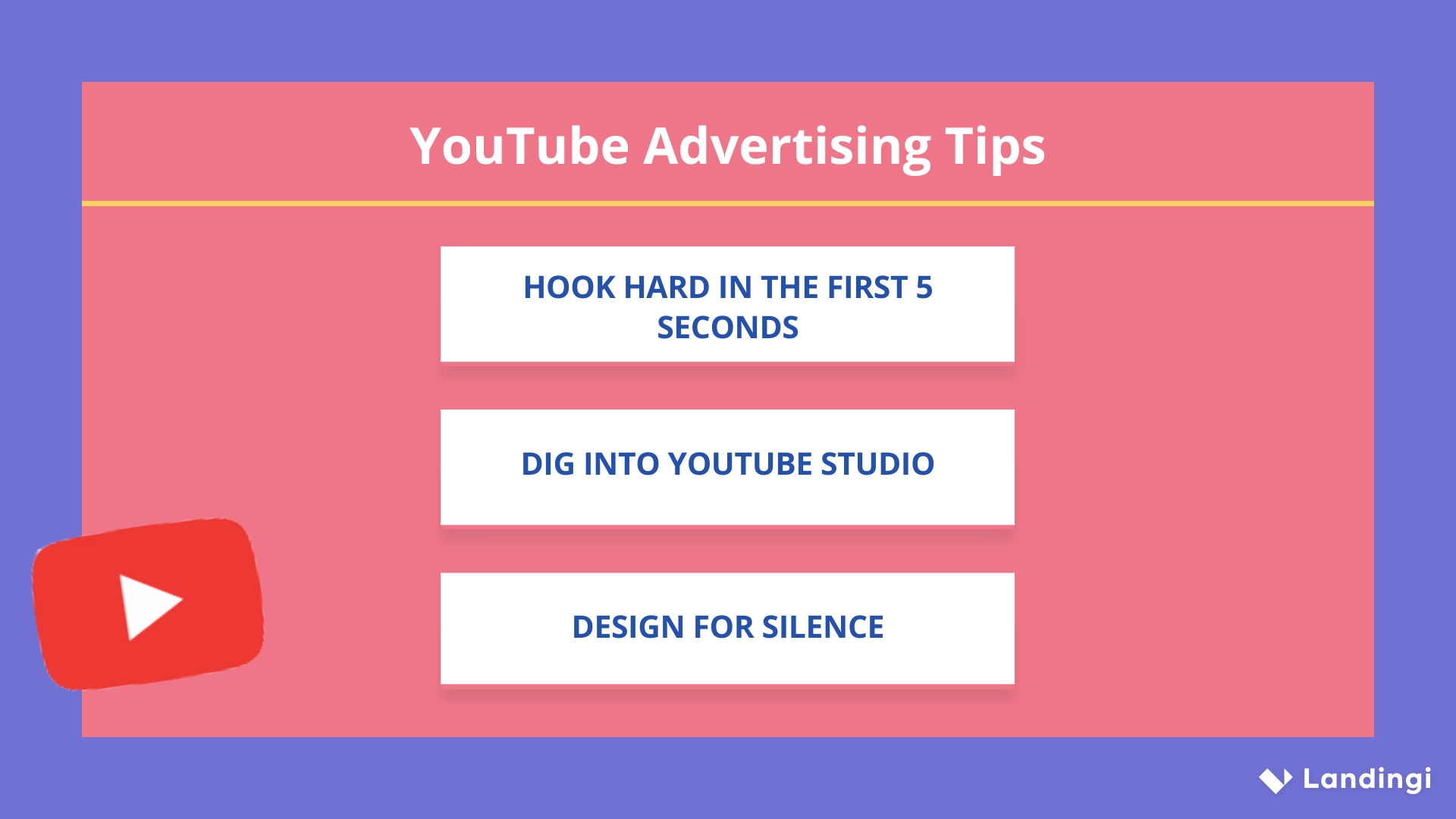
1. Hook hard in the first 5 seconds
Before your viewer even thinks about what they’re watching, they’re hovering over that Skip button. If your intro doesn’t immediately grab attention, it’s game over.
What to do: Start with a question, a surprising visual, or a punchy statement. No slow fades. No 10-second logos. No long intros. You’ve got 5 seconds to earn the next 10.
2. Dig into YouTube Studio
Google Ads gives you the basics—views, CTR, device breakdown. But YouTube Studio goes deeper. There, you can track card clicks, average view duration, and viewer engagement across different devices. And that data can save your budget.
Some devices, like TVs and game consoles, often show strong view metrics (long watch times, high completion rates). But here’s the catch: they don’t support clickable cards. So while your video may look like it’s performing, you’re getting zero clicks—and possibly wasting money on non-converting views.
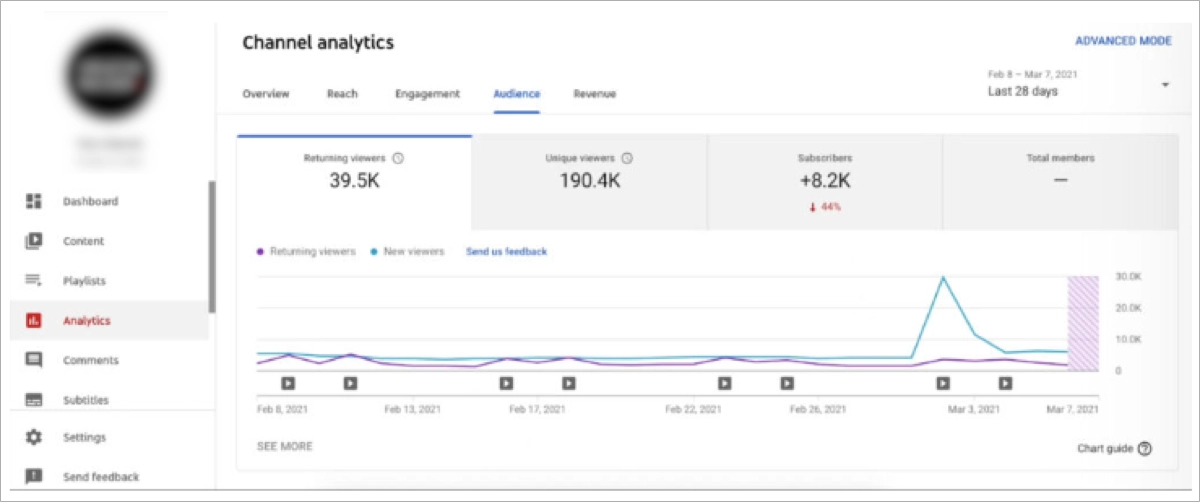
What to do: Head into YouTube Studio, layer in metrics like card click rate and % viewed, and compare across devices. If you’re running TrueView discovery or anything conversion-focused, consider excluding TVs and game consoles.
3. Design for silence
Not everyone’s watching with sound. Captions and text overlays aren’t just accessibility features—they’re performance tools. On mobile especially, muted autoplay is common. A great ad with captions can still deliver the message without sound.
Extra tip: Use kinetic typography or animated text to highlight key points visually.
Want more from your YouTube videos? Embed them on landing pages and watch conversions grow!
#5 Native Advertising Tips
Native ads are built on one core idea: don’t interrupt—integrate. When done right, they match the tone, format, and value of the platform they live on while still moving the reader toward your brand. Here’s how to make native content feel helpful, not salesy.
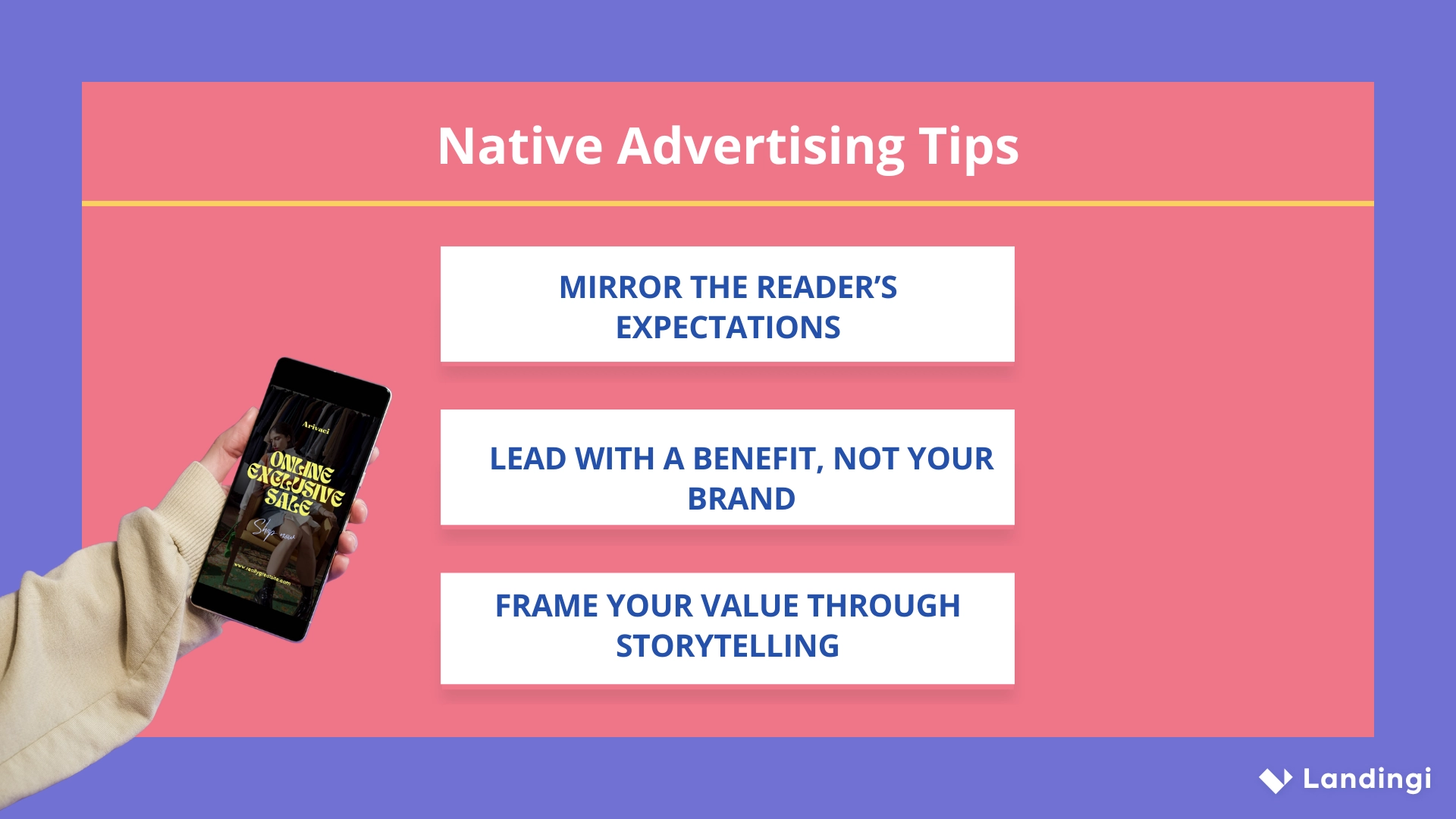
1. Mirror the reader’s expectations
Native content should look and feel like the rest of the platform. If your ad shows up on a news site full of in-depth explainers, a shallow listicle won’t cut it. Match the format your audience came for.
Example: On a platform like Forbes or Business Insider, aim for headline formats like “7 Mistakes New Managers Make” or “How X Company Cut Costs by 30% in 3 Months.” It’s content-first, but quietly branded.
2. Lead with a benefit, not your brand
Native advertising isn’t the place to shout your name. Instead, start by offering value. What problem can you solve? What insight can you deliver? The reader should feel like they’re getting something useful from the first sentence.
Good example: How to Sleep Better Without Changing Your Routine”
Bad example: “Try SleepEZ Pillows — The Best on the Market”
People don’t click on ads—they click on stories that matter to them. You earn the click by promising a solution, not a pitch.
3. Frame your value through storytelling
People don’t remember products—they remember stories. Use narrative structure to deliver value while gently guiding readers toward your solution.
Start with a relatable problem → introduce a real person/team/brand → explain how they solved it → tie in your offer as part of the journey.
Example lead-in:
“Emma was spending 6+ hours a week writing job descriptions—until she found a way to automate the process without losing her team’s voice.”
Storytelling builds emotional momentum. It lowers resistance and makes the reader want to know how it ends even if the ending involves your product.
#6 Audio Advertising Tips
With no visuals to lean on, audio ads live or die by the words, tone, and timing. Here’s how to make sure your ad gets heard and remembered.
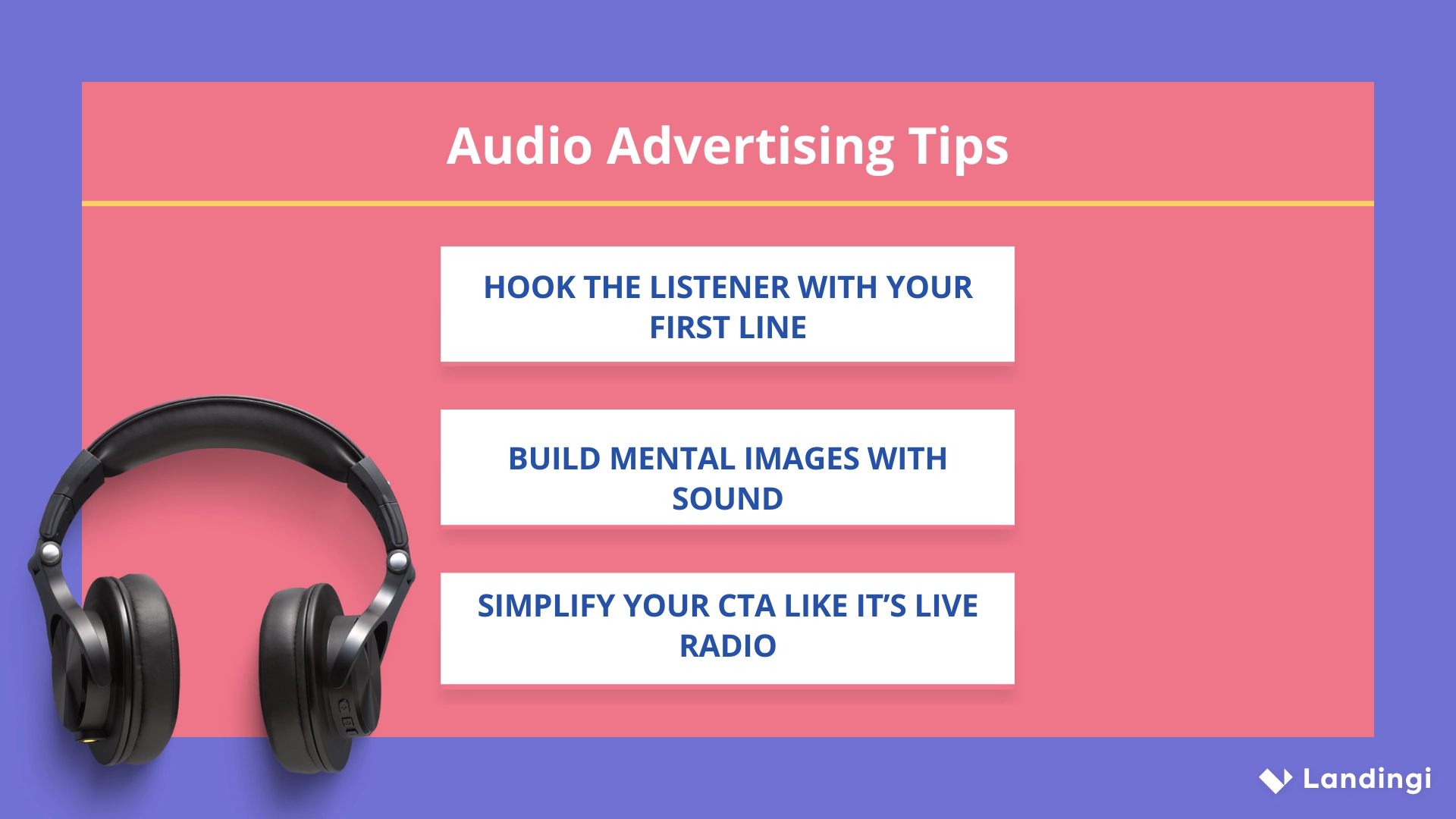
1. Hook the listener with your first line
You don’t get a visual to stop the scroll, so your opening line is everything. If it doesn’t spark interest, your message fades into background noise (or gets skipped entirely).
Lead with a bold question, a relatable moment, or a surprising fact. Skip the intros and disclaimers.
Good Example: “Still paying for a gym membership you don’t use?”
Bad Example: “Hi, we’re FitTime—the leading fitness platform for busy professionals…”
2. Build mental images with sound
Since you can’t show anything, you have to help the listener picture it. Use vivid language, ambient sound, or simple storytelling to trigger imagination.
Example: “Imagine unboxing a brand-new phone—the seal cracks, the screen lights up, and you haven’t even paid full price yet.”
3. Simplify your CTA like it’s live radio
Long, clunky URLs and multi-step CTAs are useless in audio. Your listener can’t click anything—they have to remember it. Keep it short, clear, and repeatable.
Use vanity URLs, simple brand names, or one-line actions like “Download the app” or “Search for SleepSound in your podcast player.”
Pro tip: Say it twice, and pause just before or after to let it land.
Bad CTA: “Go to www.brandname.com/offers2024-slash-deals?utm=source…”
Better CTA: “Just visit Brandname dot com. That’s Brandname dot com.”
Pair eye-catching visuals with high-converting landing pages in Landingi!
Start Building Landing Pages that Boost Your Ad Performance
Digital advertising isn’t just about getting noticed — it’s about creating a full journey that starts with curiosity and ends in action. Every ad type you’ve explored — from search to audio — plays a unique role in moving your audience closer to “yes.” But here’s the secret: your campaign’s real power shows after the click.
Key Takeaways
- Every platform plays a unique role. Search captures intent, social drives engagement, video tells stories, and native builds trust. The best strategies mix and match channels to meet users at every stage.
- Creativity wins the scroll. Whether it’s a six‑second YouTube ad or a single image on Instagram, great ads hook fast, feel native to the platform, and make the viewer feel something — curiosity, excitement, trust.
- Relevance drives ROI. Ads work when they match context — the right message, at the right time, for the right person. Targeting, tone, and timing turn impressions into impact.
- Landing pages seal the deal. The post‑click experience is where conversions happen. Align your ad and landing page message, simplify the path to action, and keep it fast, focused, and mobile‑ready.
With smart ads and optimized landing pages, you’re building momentum that converts. If you’re ready to turn your traffic into tangible results, Landingi gives you the tools to create high-converting, campaign-specific landing pages without the guesswork. Try now!
